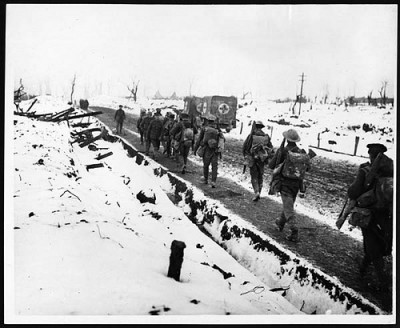GLOBAL. The successful alliance between the United States and the Soviet Union brought victory and an end to World War II. However, peace didn’t last long. Administration changes in both the United States and the Soviet Union contributed to the deterioration and end to friendly relationships that had been forged during WWII. That marked the beginning of five decades of tensions between the two countries; at times, it seemed inevitable that the two superpowers would engage in an all-out war. The standoff between the US and Russia over Cuba – known as the Cuban Missile Crisis – is a stark reminder that Cold War maneuvers and rhetoric could spiral events out of anyone’s control.
Time heals they say, and it seems to be true. In April 2009 at the G20 summit in London, Russian President Dmitry Medvedev and U.S. President Barack Obama promised a “fresh start” in U.S.-Russia relations. A month prior, in March 2009, U.S. Secretary of State Hillary Clinton and the Russian Foreign Minister, Sergey Lavrov, pressed a “reset button” as a symbolic gesture of a new relationship between the two countries. Both leaders acted quickly and proved to the world that they were serious; they were not giving lip service. On March 24, 2010 the United States and Russia reached an agreement to reduce their arsenals of nuclear weapons. The nuclear arms reduction treaty, rightfully called New Start, was signed by both the Russian and the American Leaders on April 8, 2010 in Prague. For the first time since the Cold War ended, it seemed that both countries were interested in starting a promising relationship.
Ironically, as if history has to repeat itself, nearly 25 years since the Cold War ended in 1991, the world may be going back to an era of nightmarish tensions, frictions, and confrontations between the US and Russia. If history is any guide, a war – perhaps a major war involving several countries or possibly even World War III – could inevitably ensue. In the past few weeks, there has been a trend that’s very reminiscent of the Cold War era. If we accept that events are cyclical, we’re heading towards another such era; the Ukraine crisis is just the beginning. When the Cold War was in full swing, countries picked sides. Those that sided with the United States lined up in the NATO camp. Those that sided with Russia signed the Warsaw Pact. Strikingly similar events are currently shaping the world into camps.
The Cold War was characterized by a prolonged state of hostility between the United States and the Union of Soviet Socialist Republics (USSR). There has never been a consensus as to its causes, but several events help explain its origin. After the end of World War II, the United States and USSR, who fought side by side to defeat the Nazis, could not come to an agreement regarding how the post-war world should be shaped. At the heart of their disagreement were the arguments about reparations and economic policy in Germany. While the US and Great Britain favored a strong and united Germany, the USSR preferred a weak and divided country. Those differing views and other world issues – economic, political, social – formed the bitter rivalry between the US and Russia that would last half a century.
Currently in the Ukraine crisis, there is a display of such disparate views between the two rivals: the West (US, UK, France, Germany in particular) favors a unified Ukraine, but Russia sees Ukraine – Crimea in particular – as a strategic part of Russia.
The disagreement over how Germany should be divided was only a symptom of a much deeper issue between the USSR and the US. In 1917 during the Russian revolution, US Troops landed on Russian soil and got involved in the war, trying to prevent communists from taking over Russia. Russian mistrust of the US is further reinforced by the history of the country being invaded from the west during that period.
Russia’s quick move into Crimea, Ukraine following the overthrow of Russia’s friendly president, Mr. Viktor Yanukovych, provides a peek into Mr. Putin’s strategy dealing with the West over these types of issues. After all, Ukraine is in Russia’s backyard; Ukraine is bordered in the east and the northeast by Russia. Mr. Putin’s calculations took into consideration how aggressive the West, the US in particular, has been in expanding its Capitalism doctrine after World War II.
The strategies and counter-strategies of both rivals, based on calculations and miscalculations fueled mostly by “spying tactics,” were at the core of what put the world at the brink of a nuclear war that would have spelled doom for mankind. The world is again watching the two historical rivals engage in a game of political chess with an unpredictable outcome. One thing is certain, however; if US diplomacy stays the same – no concession, no compromise, and a “do as asked” approach – the Ukraine crisis may deteriorate rapidly.
The annexation of Crimea into Russia cannot be undone regardless of negotiations and mounting sanctions. The best strategy for the West at this point is NOT to anger Putin’s administration; any hint of further US involvement in the region would only serve as an incentive for the Russian leader to continue moving further into Ukraine, a scenario that could become costly for the entire international community. George Santayana, a Spanish philosopher of the early twentieth century, warned us appropriately: “Those who cannot remember the past are condemned to repeat it.”

